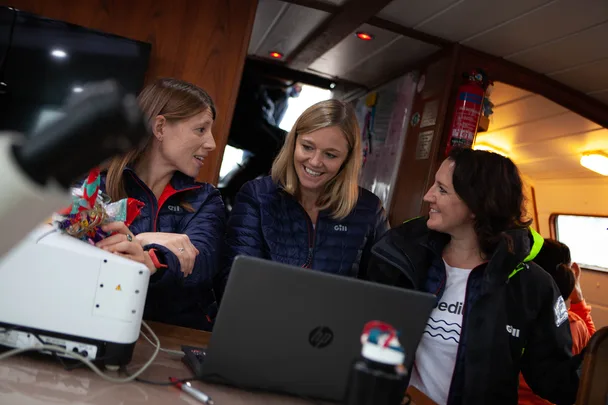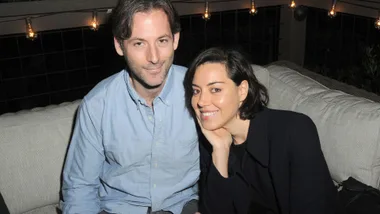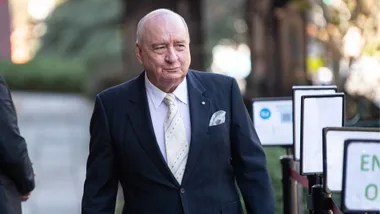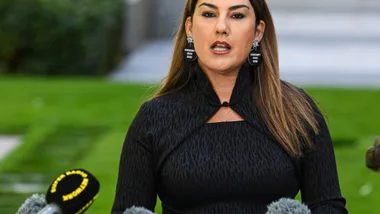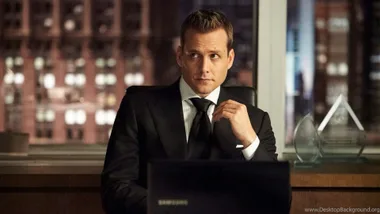Emily Penn did not always set out make a change to the world’s ocean pollution problem, but when faced with it head on, thousands of kilometres out at sea, she couldn’t help but shift her trajectory. Originally an architect, Emily was always aware of what her carbon footprint was doing to our oceans, so with a job prospect in Australia she decided to make the journey from the U.K. without flying—hopping aboard a boat that would take her across the Atlantic, through the Caribbean and the Pacific.
What Emily saw on that six-month journey was so staggering, her entire life’s mission would drastically change. “I thought I was going to spend six months on this journey, but along the way I came across plastic in the middle of the Pacific ocean,” she tells marie claire. “We were actually going for a swim one day off the boat and I suddenly saw a toothbrush just floating past me. And then I saw a bottle top and a cigarette lighter.”
Looking out further, Emily began to see hundreds of little fragments of plastic, a sight she couldn’t ignore. “By the time I arrived in Australia, I thought, I want to focus on tackling this problem.”
Twelve years on Emily is leading her organisation eXXpedition, a series of all-female sailing voyages whose mission is to collect data and expose the ‘invisible’ micro-plastic and toxic pollution in our seas. The ocean advocate also recently partnered with SAP to create the SHiFT Platform, an online hub that allows users to find their role in tackling ocean plastic pollution by navigating hundreds of impactful solutions from sea to source.
Below, the eXXpedition founder speaks to marie claire Australia.
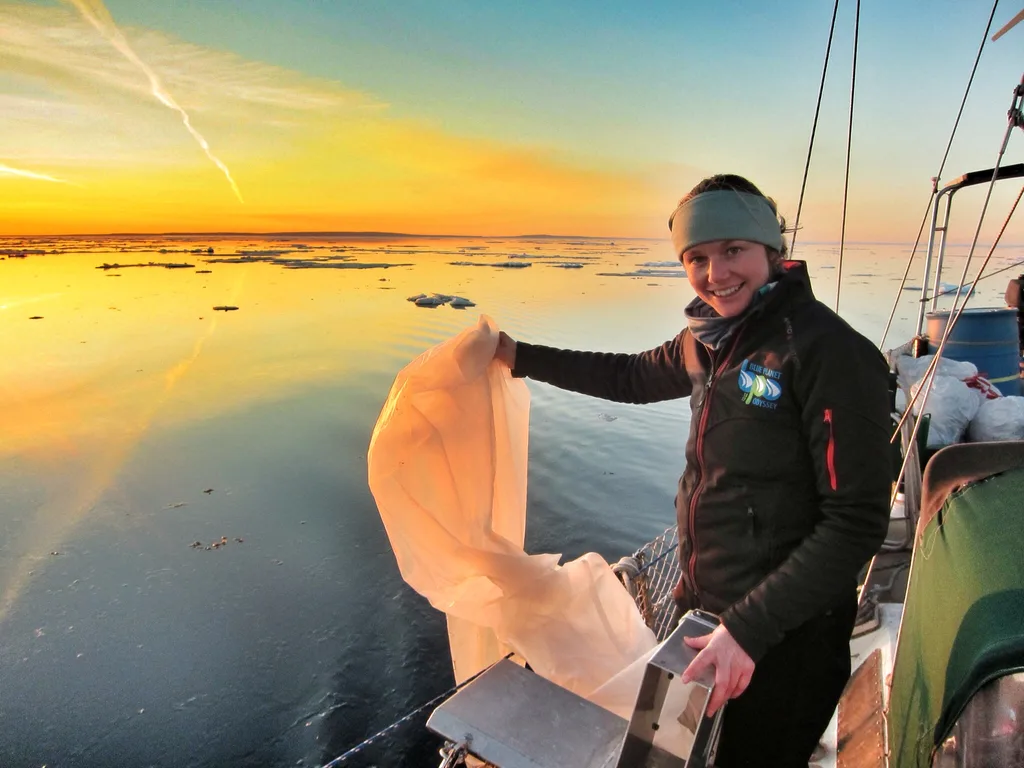
Along With That First Discovery, What Inspired eXXpedition?
I started working just on research, really trying to understand more about the problem. It was then that I realised we needed to get out at sea and explore Gyres [large systems of circulating ocean currents], these accumulation zones, to do the scientific research to understand what was really happening. I spent a few years working on that first global study and then that led to learning more about the impacts of plastic and toxic chemicals on the food chain and understanding that it was getting into the sea life. It opened up all sorts of questions for me about the fact that we are at the top of the food chain; could that also have an impact on human health? The reality is there are very few answers to these questions.
I decided in 2014 to sort of skip to the end of this chain, to me, and find out what chemicals I had in my own body. Partnering with the with United Nations to do what we call a body burden test, we looked for 35 chemicals in my blood that are banned because they’re toxic to humans. We actually found 29 of these chemicals in my body. It’s not specifically plastic but it’s all these chemicals that are just associated with all this stuff in our lives that’s often made of plastic. And as a result a lot of the chemicals that wash off it end up in the ocean.
Again, there’s very little we know about actually how those 29 chemicals got inside my body. It might be through pollution. It might just be through direct contact. But it was enough for me that made me sit up and think, this really needs to be studied.
What Is The SHiFT Platform?
The SHiFT Platform was built using SAP and Qualtrics technology, and they’ve really been the drivers behind making it happen. The methodology behind the online platform is the SHiFT method, which I created years ago and I’ve used on all of these journeys. Now, we’ve simply turned it digital so that more people can access it around the world. It is based on this idea that actually there’s no silver bullet solution for solving the plastics issue, but the good news is there are hundreds of solutions. Basically this platform helps people navigate what can be quite a complicated process but makes it very, very simple for individuals or businesses to go on that journey.
It’s like flipping the problem on its head. So rather than just saying, ‘Okay, how do I switch plastic with one other thing and do it everywhere at scale?’ It’s flipping the question on its head and saying, ‘What am I trying to do?’
Of all these solutions there are hundreds of them on this platform, and the way the technology guides you through these filters, it makes it easy to find the solutions that already exist out there. But without being able to navigate to them, you don’t know that they exist.
How Have You Combined The Energy Of eXXpedition’s Community With That Of SAP’s Innovative Technologies?
We have to innovate. We have to come up with new solutions. And that’s the great thing about technology. It allows us to do that quickly and it allows us to do it globally. This is a problem that crosses all our borders. Ultimately we share one ocean and wherever we live on planet earth we are all connected and nature doesn’t know political boundaries or cultural borders. And we do need this very united global response to these challenges. And that’s why on our voyages we have people from all over the world coming together to solve the problem. But it’s also why we need technology on our side. To take this into a virtual world that allows us to really keep those connections live especially when all our borders are shut and we can’t go in person to work together. We really need to embrace technology right now to keep on, as you say, growing, getting this platform and other solutions kind of spread further afield and keep moving forward together.
I mean, it’s really about scale. I think that’s the key word. Because that’s what technology unlocks for us. Whether it’s working on the solutions platform but also I think in particular with SAP. They are in a very unique place, and given that they work with so many different global brands and they’re working on their technology and their supply chains of all of these brands, there is an opportunity to really standardise and therefore scale a lot of the solutions that we need. So that would be the kind of overarching message in many different ways through the collaboration.
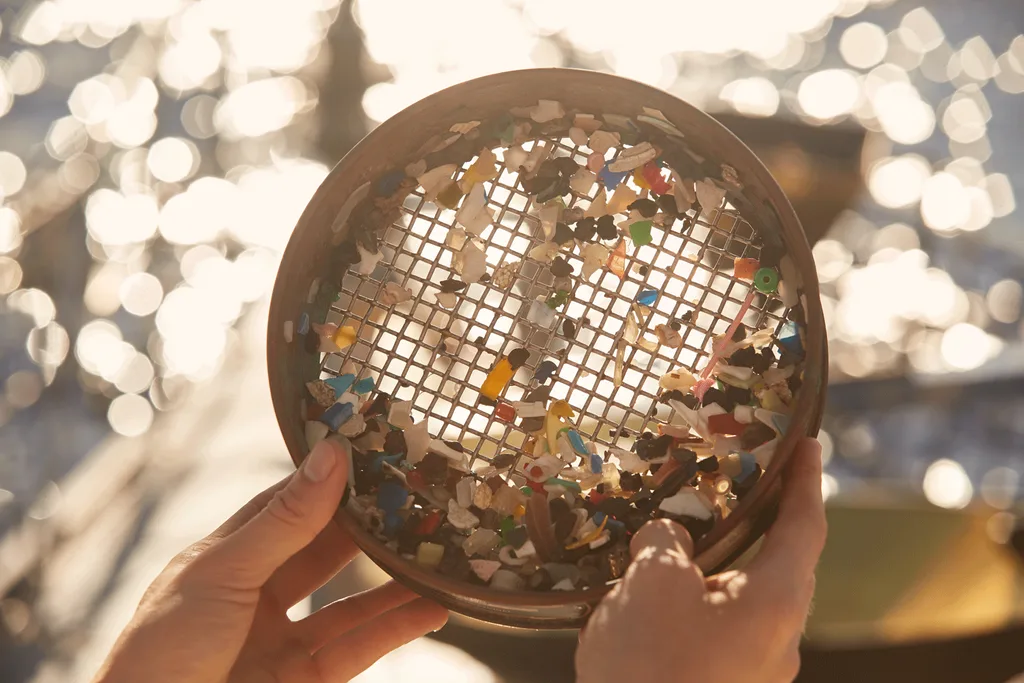
Why Did You Decide To Create All-Female Voyages?
It was originally going to be this one-off voyage in 2014 to look at this issue, but it ended up getting a lot of traction and having really positive results. There was something about having a group of women at sea that felt incredibly different from all those voyages that I had led as mixed teams—I don’t know if it’s something about the way women connect, especially when you’re in this really unfamiliar environment. It’s a real bonding experience in the way everybody supports each other and comes together.
I remember the end of that first voyage we arrived in the Caribbean and I should have felt this sort of relief of, ‘It’s all over’, but I remember stepping off the boat and thinking, ‘It just feels like the beginning’ because we’d seen the problem but there was so much energy on board and collaborations formed and plans for the future that it felt like we were just stepping back ashore to start creating the change.
Ultimately with this issue, as much as the problem is in the middle of the ocean, all the solutions are back on land. Which is why the industry connection is so important because we got to get as far upstream as possible and look at supply chains, and look at all of the ways that we can actually eventually influence what’s going on in the ocean.
The solutions are there, there’s no doubt about it. It’s just a question of how do we scale them.
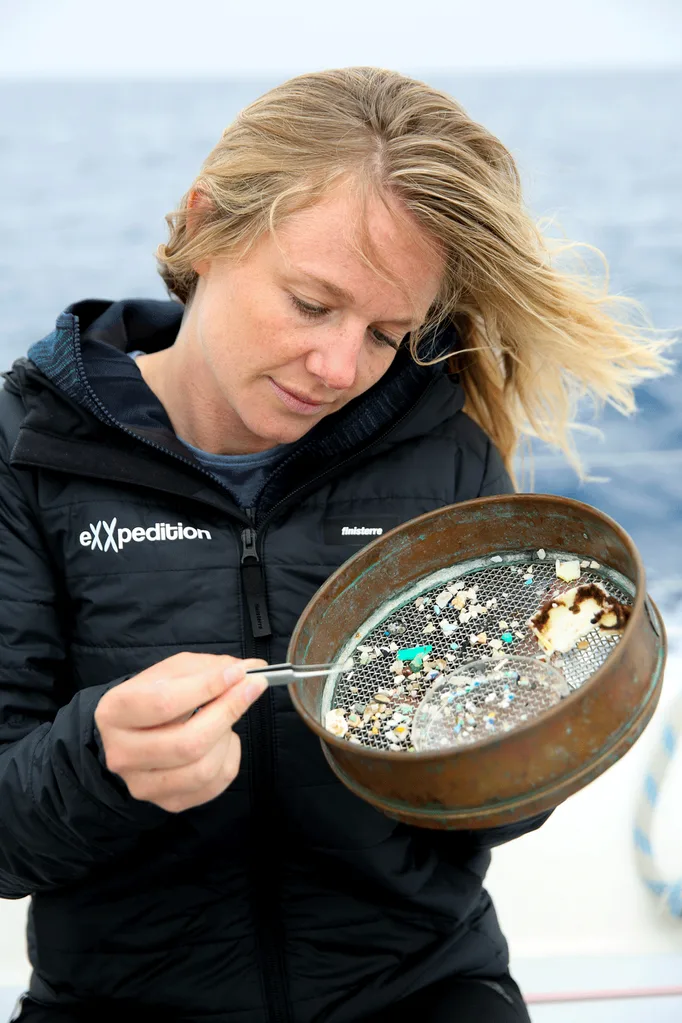
Of Those Voyages, Have There Been Any Defining Moments?
I think a real moment of realisation for me was when I threw this trawl over the side of the boat—this device for taking a sample of plastic—and every time we do it, the ocean just looks blue and beautiful and amazing. But, you throw this trawl over and you think, ‘No way can there be plastic in there today it just looks to too amazing and beautiful.’ And when you pull it up after 30 minutes there’s handfuls of these fragments of plastic that you couldn’t see when you looked at the surface of the water—but it’s there.
That’s when I realised how much this issue was an unseen problem, hence eXXpedition’s tagline is making the unseen seen. It’s something that impacts us that we don’t see on our daily lives, and then I went on to realise how many unseen’s there were when we started talking about women in sailing, science and exploration and the diversity that we sort of also addressed through our voyages.
So the problem is unseen but also, I think, our impact is unseen. It’s the fact that every time we put piece of polyester clothing in the washing machine, we’re contributing to the problem and we have no idea, every time we drive our car on the road, some little plastic fragments of our tires are going onto the road that are going into the drain that are ending up in the ocean. We’re having an impact, an unseen impact, that we don’t even realise we’re having.
We’re trying to make it more visible and make it much, much easier and positive for people to take small actions every day that eventually all add up to really solving this problem.
How Do We Go About Making Sure That People Are Aware Of Just How Bad The Issue Is?
It’s hard. Because of the unseen nature, I think, it makes it really hard to visualise. I think that’s one of the biggest challenges, is that it’s so unseen but also the way that it’s seeping out. You can’t point your finger at anyone. We’re all part of the problem, and we’re all part of the solution.
A lot of what we talk about at eXXpedition is that we all have a superpower. We all have something that we’re brilliant at. We have a skill. We have an expertise. And it’s a case of saying rather than I’ve got to be an amazing scientist or I’ve got to be a prime minister or a politician to solve this, it’s about saying, ‘Well, what can I do? And where does that intersect with the problems that I care about?’ So onboard we have scientists working alongside filmmakers and journalists and artists and teachers and packaging designers and policy makers. I really believe the only way we’re going to solve it is if we do approach it from every angle.
